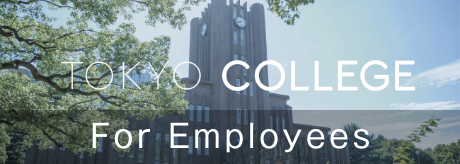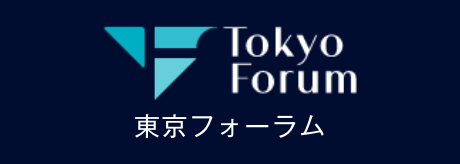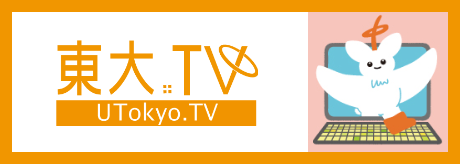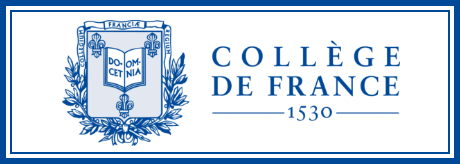- HOME
- (un)sustainable things
(un) sustainable things
The world is constantly changing. But, when society is the one changing, wouldn’t it be nice if we could say, “How about like this?” What if by bringing people together, we could become a force for good? At Tokyo College, these are the kinds of thoughts that motivate our research.
Here, we have each expressed through art ways in which our research relates to the topic of “sustainability.” We hope that this exhibit allows you to feel more familiar with the research activities our members are engaged in here at Tokyo College.
Researcher

Rosita SAMSUDIN
Traditional and modern attitudes towards objects
The environmentalism of Kintsugi
It is not uncommon to break a porcelain object.
Rather than discarding, the Japanese technique of Kintsugi demonstrates the artistry of giving a second life to broken objects.
In essence, Kintsugi teaches about the attitude of upcycling and caring for the environment.
Porcelain is a non-recyclable material, and only a few companies have taken the initiative to re-process porcelain products.
2022.8.1
Researcher

Rosita SAMSUDIN
Traditional and modern attitudes towards objects
The convenience of mass-produced objects
The advancement of mass production has caused upcycling to become less convenient and, more often, not affordable. Discarding is hence seen as a better option and widely practiced. A key driver of this tendency is linked to a lack of environmental awareness and attachment.
2022.8.1
Beifoosa700, CC BY-SA 3.0, via Wikimedia Commons
Researcher

Michael ROELLINGHOFF
Sustainability in the Countryside
Smallholder agriculture
Smallholder agriculture is ecologically sustainable, is the backbone of local economies, and provides habitat for a surprising variety of animals.
This farmland in Saga Prefecture supports local families and is home to egrets, ducks, turtles, and frogs. Protected by the government, this land currently cannot be developed and, with proper care, will be home to both humans and animals long into the future.
2022.8.1
Researcher

Michael ROELLINGHOFF
Sustainability in the Countryside
Suburban Development
In Japan, like many other countries, farmland is being replaced by retail and housing developments.
Not only does this destroy local ecosystems, it also puts the food security of Japan – a country which imports much of its food – at risk.
Additionally, far from urban centres, these developments create more demand for cars, putting further stress on the environment.
2022.8.1
IDuke, CC BY-SA 2.5, via Wikimedia Commons
Researcher

Rosita SAMSUDIN
Locality matters in food resilience
The young farmers and food resilience
At Ngadiprono (Temanggung, Indonesia), the local community encourages young farmers to remain in the rural by linking agricultural produce and eco-tourism.
This effort helps to improve young farmers' economic status and their assurance in rural farming.
2022.8.1
Researcher

Rosita SAMSUDIN
Locality matters in food resilience
The illusion of cities
The belief that cities offer better social and economic opportunities has triggered migrations of particularly young people from rural to urban areas.
This has led to many unattended farming lands thus challenging food resilience.
2022.8.1
Researcher

Yen Yen Sally RAHAYU
Limited space and sustainable food production
Urban aquaponics system in a limited outdoor space (8m²) in Tokyo city.
Aquaponics is a sustainable agriculture method combining raising fish and plants in a recirculating system.
The symbiosis between plants, fish, and bacteria results in a 90% reduction of water and space compared to soil-based agriculture.
Thus, an aquaponics system makes it possible to practice sustainable food production in the typical limited and soilless outdoor space of an apartment in the city.
It can be a choice for people who want to farm in a sustainable way but have less land. Utilizing a limited space to create aquaponics could play a significant role in not just feeding people but also raising awareness about sustainable agricultural methods.
2022.8.1
Researcher

Yen Yen Sally RAHAYU
Limited space and sustainable food production
Underutilized outdoor space in the same apartment area in Tokyo city.
One of the aquaponics' benefits is that it makes it possible to have a food production system that's still sustainable.
While it is better suited to urban environments, many outdoor spaces in residential areas in the city remain underutilized.
2022.8.1
Researcher

Shiori SHAKUTO
Wrapping and
Migrant Identity
Gift wrapping paper from home
The Japan Club of Kuala Lumpur in Malaysia hosts an annual charity bazaar by Japanese migrants. One of the popular items for sale is used wrapping paper brought from Japan. In Japan, gifts come wrapped in elaborate papers. Some Japanese women in Malaysia told me that they kept these papers from Japan so that they could continue to wrap their gifts for others in Malaysia. It is a transnational recycling of beautiful papers as well as the good-will.
2021.8.1
Researcher

Shiori SHAKUTO
Wrapping and
Migrant Identity
Plastic wrap from home
Japanese women in Malaysia were great conversationalists in general, but they were especially articulate when they talked about things they brought from Japan. Some of them brought surprisingly mundane things, like plastic wrap to be used in kitchens. They distinguished the quality of Japanese wrap brought from Japan (top) from wrap sold in the Japan Club of Kuala Lumpur (middle), and from wrap sold in local supermarkets (bottom). The preparation of Japanese meals was an important activity for migrant women, and replicating the tactility and visuality of Japanese wrap aided the creation of the comfort of home in the migrant destination. It shows the complexity of debate over the ban on plastic, when it has been an integral part of everyday life.
2021.8.1
Researcher

Marcin Pawel JARZEBSKI
Satoyama Forest in Japan
Aged people reviving satoyama forest, Kashiwa city, Chiba prefecture
Satoyama is a forest between mountains and farmlands. Satoyama forests have been developed through centuries of small-scale agricultural and forestry use. These days less and less people use satoyama due to industrialization, urbanization that consequently leads to rural depopulation. However, these days aged people can find a way to socialize in Satoyama while doing regular forest errands together, as well as organizing small events and gatherings.
2021.8.1
Researcher

Marcin Pawel JARZEBSKI
Satoyama Forest in Japan
The same forest a place of littering and waste disposal, next to Satoyama group, Kashiwa city, Chiba prefecture
For some people the forest becomes a place of satoyama revival where aged people can find their fulfilment while spending time with others and doing forest management. However, for some, the same forest becomes a place of illegal littering and old home appliances disposal even these days while Japanese people’s awareness on proper waste disposal and recycling is very high compared to other countries. This problem cannot be solved by monitoring cameras, sign boards and local people.
2021.8.1
Researcher

Michael FACIUS
Edo &
Sustainability
The radish-nightsoil cycle
We tend to think of the Edo period as a time of an environment-friendly circular economy. Every time I am buying a daikon radish at the grocery store, I am reminded that it was one of the most symbolic products of this type of economy. The excrement or nightsoil of the Edo townspeople was collected by the farmers and used as fertilizer. It was in fact so valuable it was paid in radish: the Hitotsubashi estate alone would get 2000 medium-sized radish for their annual output. As the farmers would say: “Edo people take with their mouth and give with their ass.”
2021.8.1
Researcher

Michael FACIUS
Edo &
Sustainability
Deforestation in the Oirase Gorge
The Oirase Gorge is one of the most scenic spots for autumn leaves-watching in Tohoku. When I visited the area last autumn, I was surprised to read on a panel that even this remote region was affected by deforestation in the later Edo period. Already in the eighteenth century, the growing economy and increasing development of Tohoku meant that some natural resources were exploited beyond what they could offer.
2021.8.1
LinkResearcher

Mark BOOKMAN
Accessibility and (Un)sustainable Infrastructure
A Toilet Designed For Multiple Users
Here, we see a toilet with multiple handrails installed to assist old and disabled people, as well as other users who might need support. Around the toilet are emergency buttons and toilet paper rolls at different heights to ensure that people with diverse bodies can use them. This kind of ‘universally-designed’ toilet will help empower members of Japan’s rapidly aging society in the future and make sure that they can participate in activities outside their homes.
2021.8.1
LinkResearcher

Mark BOOKMAN
Accessibility and (Un)sustainable Infrastructure
A Closed-off Elevator
Here, we see an elevator that has been temporarily shut down. While some individuals may be able to take an alternate route to their destination, even a short disruption of services can lead to significant delays for users who need the accessibility that the elevator provides. Such delays inconvenience not only the people immediately involved, but also their friends, family, and co-workers, whose activities depend on their availability. To create a sustainable future for Japan and countries across the world, we must ensure that no-one is left behind.
2021.8.1
LinkResearcher

Yuki TERADA
The Human Past and Museum Gift Shops
You can purchase the objects from store shelves and take the memories with you
Museums not only provide knowledge of the human past by collecting and exhibiting artifacts, but they also sell products to visitors. This is a replica of an Iron Age Iranian spouted vessel in the form of a zebu, which I bought from the museum gift shop at the National Museum of Iran. Purchasing a replica made it possible for me to admire this beautiful figure anytime at home.
2021.8.1
Researcher

Yuki TERADA
The Human Past and Museum Gift Shops
Commercialization of museums is accelerating
Less public funding for museums means more commercialization. Museum gift shops around the world offer varieties of fancy products such as magnets, mugs, puzzles, plastic folders, umbrellas, water bottles, and phone cases. Nowadays, we can purchase goods from online shops without even visiting the museums. While some products are inspiring and handy, is accelerating commercialization the only way to financially sustain museums?
2021.8.1
Researcher

Matthew MULLANE
Architecture and the Sustainability of Re-Use
Sustainable (Old) Architecture
In response to the dire climate consequences of new construction, some architects have begun to re-evaluate the need to always build new structures. One solution is “adaptive re-use.” Adaptive re-use approaches existing buildings that would otherwise be demolished and retrofits them with new sustainable technologies and a new program for contemporary use. This is a major shift in architectural thinking. Architects are taught that the world’s greatest buildings are new projects that manifest the unique vision of the architect. In other words, the problem-solving and strategizing involved in adaptive re-use has not traditionally been valued as an “architectural” act. This is changing however.
As an early example of adaptive re-use, we can look to Lina Bo Bardi’s SESC Pompeia Factory in Sao Paulo, Brazil (1977-1986). Originally a metal barrel factory, Bo Bardi gutted the building and utilized its open floor plan to create a wandering program suitable for art exhibitions and cultural events. The structure has not been re-clad and retains all of its former structural elements typical of a factory floor. Bo Bardi added small touches like red paint, ramps, and water features that indicate its adaptive re-use.
2021.8.1
Researcher

Matthew MULLANE
Architecture and the Sustainability of Re-Use
Unsustainable (New) Architecture
Architecture is hungry. Buildings consume massive amounts of energy to operate, and the carbon footprint of new construction is enormous. Between the years 2013 and 2016, new construction projects around the world accounted for 36 percent of all energy use and 39 percent of all CO2 emissions.
The obsession with new construction is particularly acute in Japan, a country where the average house is only used for 30 years before being demolished. Due to the high cost of land, even prominent architectural landmarks have been destroyed to make room for new construction. And thus the cycle repeats itself.
Common Japanese suburban homes like these consist of prefabricated units manufactured in a large factory and shipped to the site. The manufacturer, real estate agent, construction team, and buyer are all aware of the short lifespan of the building. House manufacturing companies rely on this short cycle to predictably maximize their profits at the expense of the environment.
2021.8.1

(un) sustainable things
The world is constantly changing. But, when society is the one changing, wouldn’t it be nice if we could say, “How about like this?” What if by bringing people together, we could become a force for good? At Tokyo College, these are the kinds of thoughts that motivate our research.
Here, we have each expressed through art ways in which our research relates to the topic of “sustainability.” We hope that this exhibit allows you to feel more familiar with the research activities our members are engaged in here at Tokyo College.
Traditional and modern attitudes towards objects

The environmentalism of Kintsugi
It is not uncommon to break a porcelain object.
Rather than discarding, the Japanese technique of Kintsugi demonstrates the artistry of giving a second life to broken objects.
In essence, Kintsugi teaches about the attitude of upcycling and caring for the environment.
Porcelain is a non-recyclable material, and only a few companies have taken the initiative to re-process porcelain products.
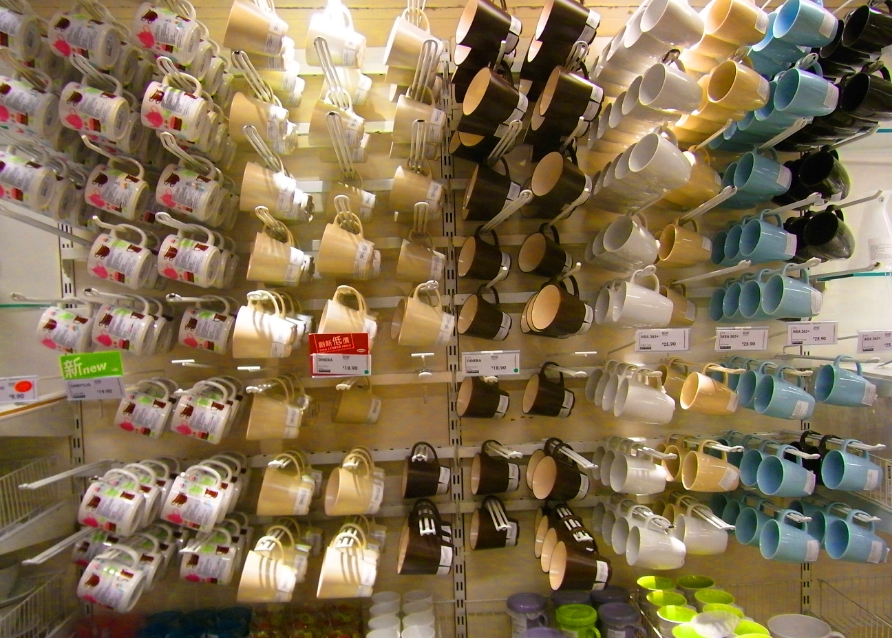
The convenience of mass-produced objects
The advancement of mass production has caused upcycling to become less convenient and, more often, not affordable. Discarding is hence seen as a better option and widely practiced. A key driver of this tendency is linked to a lack of environmental awareness and attachment.
2022.8.1
Researcher

Rosita SAMSUDIN
Sustainability in the Countryside

Smallholder agriculture
Smallholder agriculture is ecologically sustainable, is the backbone of local economies, and provides habitat for a surprising variety of animals.
This farmland in Saga Prefecture supports local families and is home to egrets, ducks, turtles, and frogs. Protected by the government, this land currently cannot be developed and, with proper care, will be home to both humans and animals long into the future.
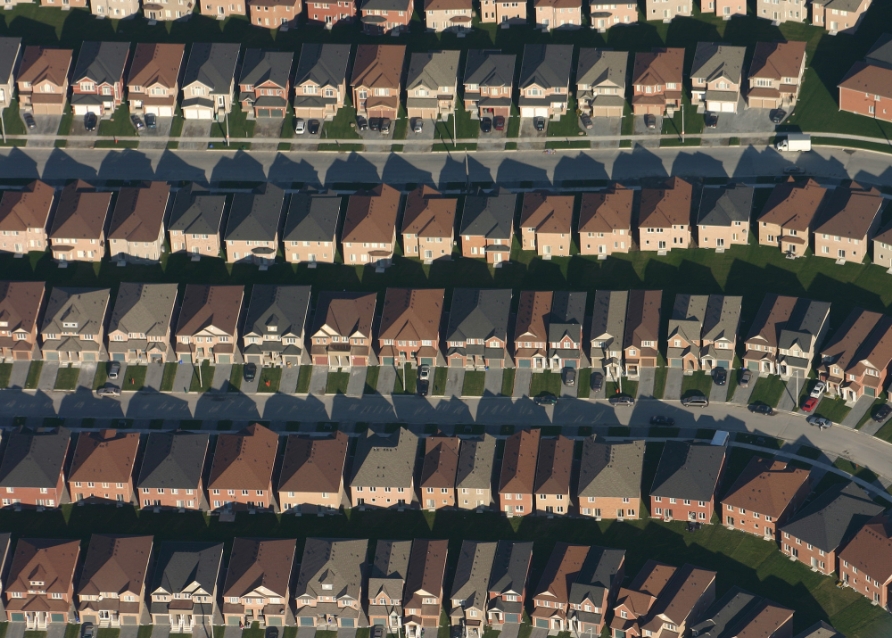
Suburban Development
In Japan, like many other countries, farmland is being replaced by retail and housing developments.
Not only does this destroy local ecosystems, it also puts the food security of Japan – a country which imports much of its food – at risk.
Additionally, far from urban centres, these developments create more demand for cars, putting further stress on the environment.
2022.8.1
Researcher

Michael ROELLINGHOFF
Locality matters in food resilience

The young farmers and food resilience
At Ngadiprono (Temanggung, Indonesia), the local community encourages young farmers to remain in the rural by linking agricultural produce and eco-tourism.
This effort helps to improve young farmers' economic status and their assurance in rural farming.
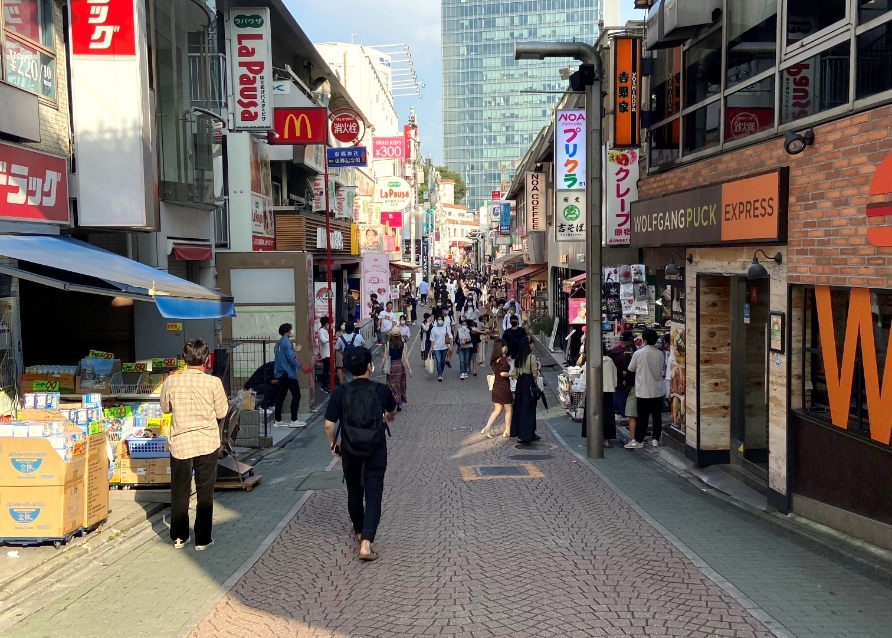
The illusion of cities
The belief that cities offer better social and economic opportunities has triggered migrations of particularly young people from rural to urban areas.
This has led to many unattended farming lands thus challenging food resilience.
2022.8.1
Researcher

Rosita SAMSUDIN
Limited space and sustainable food production

Urban aquaponics system in a limited outdoor space (8m²) in Tokyo city.
Aquaponics is a sustainable agriculture method combining raising fish and plants in a recirculating system.
The symbiosis between plants, fish, and bacteria results in a 90% reduction of water and space compared to soil-based agriculture.
Thus, an aquaponics system makes it possible to practice sustainable food production in the typical limited and soilless outdoor space of an apartment in the city.
It can be a choice for people who want to farm in a sustainable way but have less land. Utilizing a limited space to create aquaponics could play a significant role in not just feeding people but also raising awareness about sustainable agricultural methods.

Underutilized outdoor space in the same apartment area in Tokyo city.
One of the aquaponics' benefits is that it makes it possible to have a food production system that's still sustainable.
While it is better suited to urban environments, many outdoor spaces in residential areas in the city remain underutilized.
2022.8.1
Researcher

Yen Yen Sally RAHAYU
Wrapping and
Migrant Identity

Gift wrapping paper from home
The Japan Club of Kuala Lumpur in Malaysia hosts an annual charity bazaar by Japanese migrants. One of the popular items for sale is used wrapping paper brought from Japan. In Japan, gifts come wrapped in elaborate papers. Some Japanese women in Malaysia told me that they kept these papers from Japan so that they could continue to wrap their gifts for others in Malaysia. It is a transnational recycling of beautiful papers as well as the good-will.
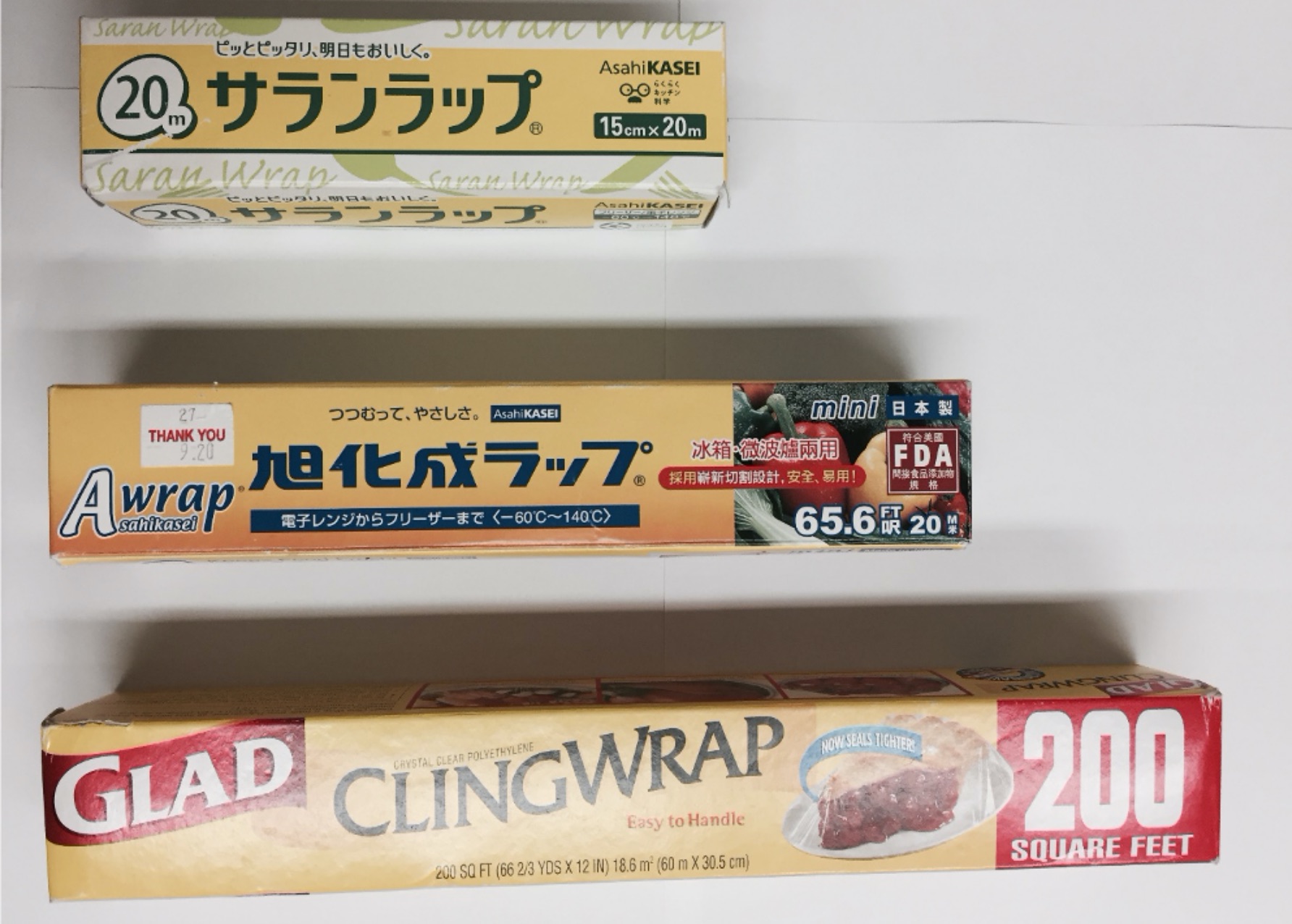
Plastic wrap from home
Japanese women in Malaysia were great conversationalists in general, but they were especially articulate when they talked about things they brought from Japan. Some of them brought surprisingly mundane things, like plastic wrap to be used in kitchens. They distinguished the quality of Japanese wrap brought from Japan (top) from wrap sold in the Japan Club of Kuala Lumpur (middle), and from wrap sold in local supermarkets (bottom). The preparation of Japanese meals was an important activity for migrant women, and replicating the tactility and visuality of Japanese wrap aided the creation of the comfort of home in the migrant destination. It shows the complexity of debate over the ban on plastic, when it has been an integral part of everyday life.
2021.8.1
Researcher

Shiori SHAKUTO
Satoyama Forest in Japan

Aged people reviving satoyama forest, Kashiwa city, Chiba prefecture
Satoyama is a forest between mountains and farmlands. Satoyama forests have been developed through centuries of small-scale agricultural and forestry use. These days less and less people use satoyama due to industrialization, urbanization that consequently leads to rural depopulation. However, these days aged people can find a way to socialize in Satoyama while doing regular forest errands together, as well as organizing small events and gatherings.
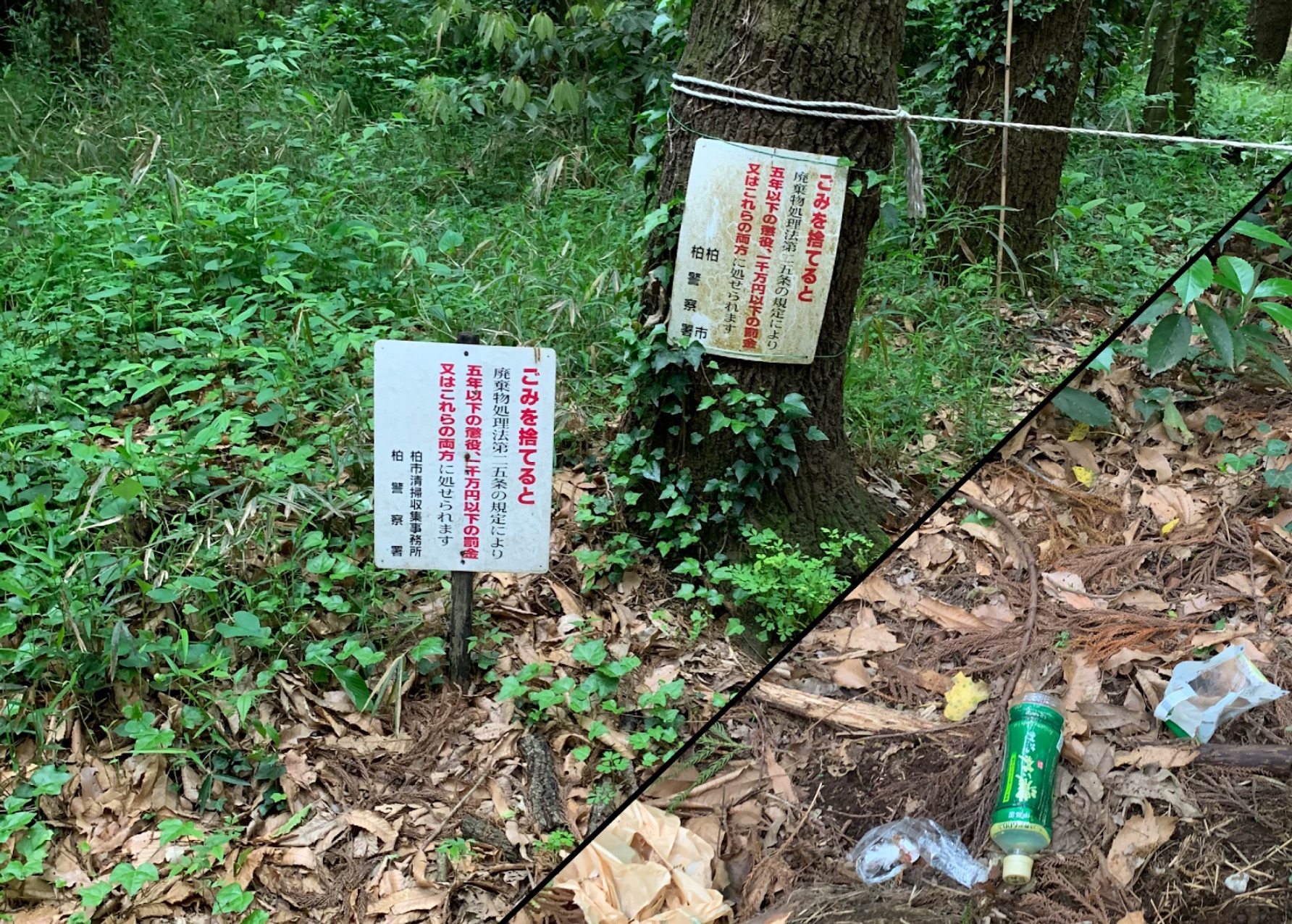
The same forest a place of littering and waste disposal, next to Satoyama group, Kashiwa city, Chiba prefecture
For some people the forest becomes a place of satoyama revival where aged people can find their fulfilment while spending time with others and doing forest management. However, for some, the same forest becomes a place of illegal littering and old home appliances disposal even these days while Japanese people’s awareness on proper waste disposal and recycling is very high compared to other countries. This problem cannot be solved by monitoring cameras, sign boards and local people.
2021.8.1
Researcher

Marcin Pawel JARZEBSKI
Edo &
Sustainability

The radish-nightsoil cycle
We tend to think of the Edo period as a time of an environment-friendly circular economy. Every time I am buying a daikon radish at the grocery store, I am reminded that it was one of the most symbolic products of this type of economy. The excrement or nightsoil of the Edo townspeople was collected by the farmers and used as fertilizer. It was in fact so valuable it was paid in radish: the Hitotsubashi estate alone would get 2000 medium-sized radish for their annual output. As the farmers would say: “Edo people take with their mouth and give with their ass.”
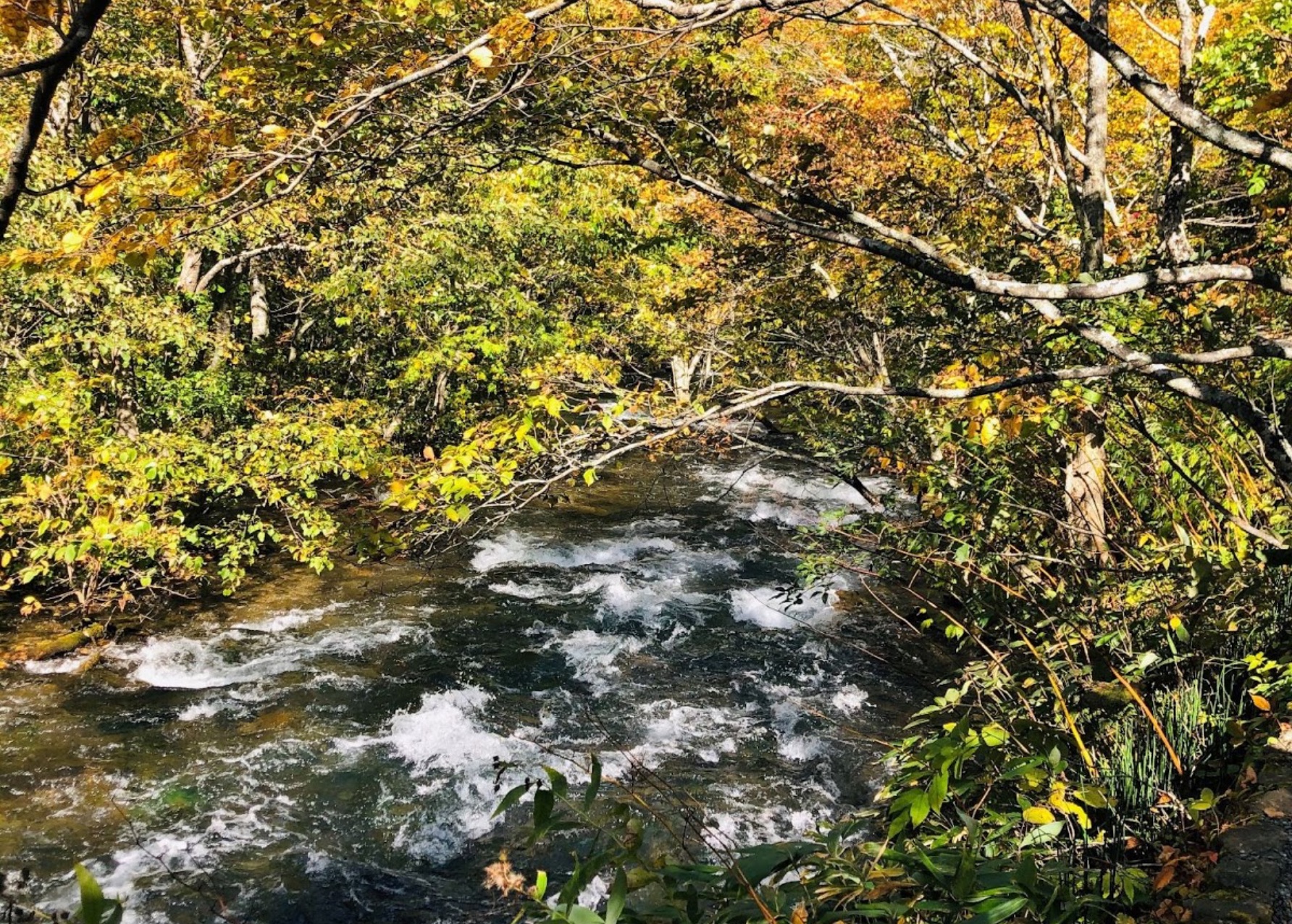
Deforestation in the Oirase Gorge
The Oirase Gorge is one of the most scenic spots for autumn leaves-watching in Tohoku. When I visited the area last autumn, I was surprised to read on a panel that even this remote region was affected by deforestation in the later Edo period. Already in the eighteenth century, the growing economy and increasing development of Tohoku meant that some natural resources were exploited beyond what they could offer.
Link2021.8.1
Researcher

Michael FACIUS
Accessibility and (Un)sustainable Infrastructure

A Toilet Designed For Multiple Users
Here, we see a toilet with multiple handrails installed to assist old and disabled people, as well as other users who might need support. Around the toilet are emergency buttons and toilet paper rolls at different heights to ensure that people with diverse bodies can use them. This kind of ‘universally-designed’ toilet will help empower members of Japan’s rapidly aging society in the future and make sure that they can participate in activities outside their homes.

A Closed-off Elevator
Here, we see an elevator that has been temporarily shut down. While some individuals may be able to take an alternate route to their destination, even a short disruption of services can lead to significant delays for users who need the accessibility that the elevator provides. Such delays inconvenience not only the people immediately involved, but also their friends, family, and co-workers, whose activities depend on their availability. To create a sustainable future for Japan and countries across the world, we must ensure that no-one is left behind.
Link2021.8.1
Researcher

Mark BOOKMAN
The Human Past and Museum Gift Shops

You can purchase the objects from store shelves and take the memories with you
Museums not only provide knowledge of the human past by collecting and exhibiting artifacts, but they also sell products to visitors. This is a replica of an Iron Age Iranian spouted vessel in the form of a zebu, which I bought from the museum gift shop at the National Museum of Iran. Purchasing a replica made it possible for me to admire this beautiful figure anytime at home.
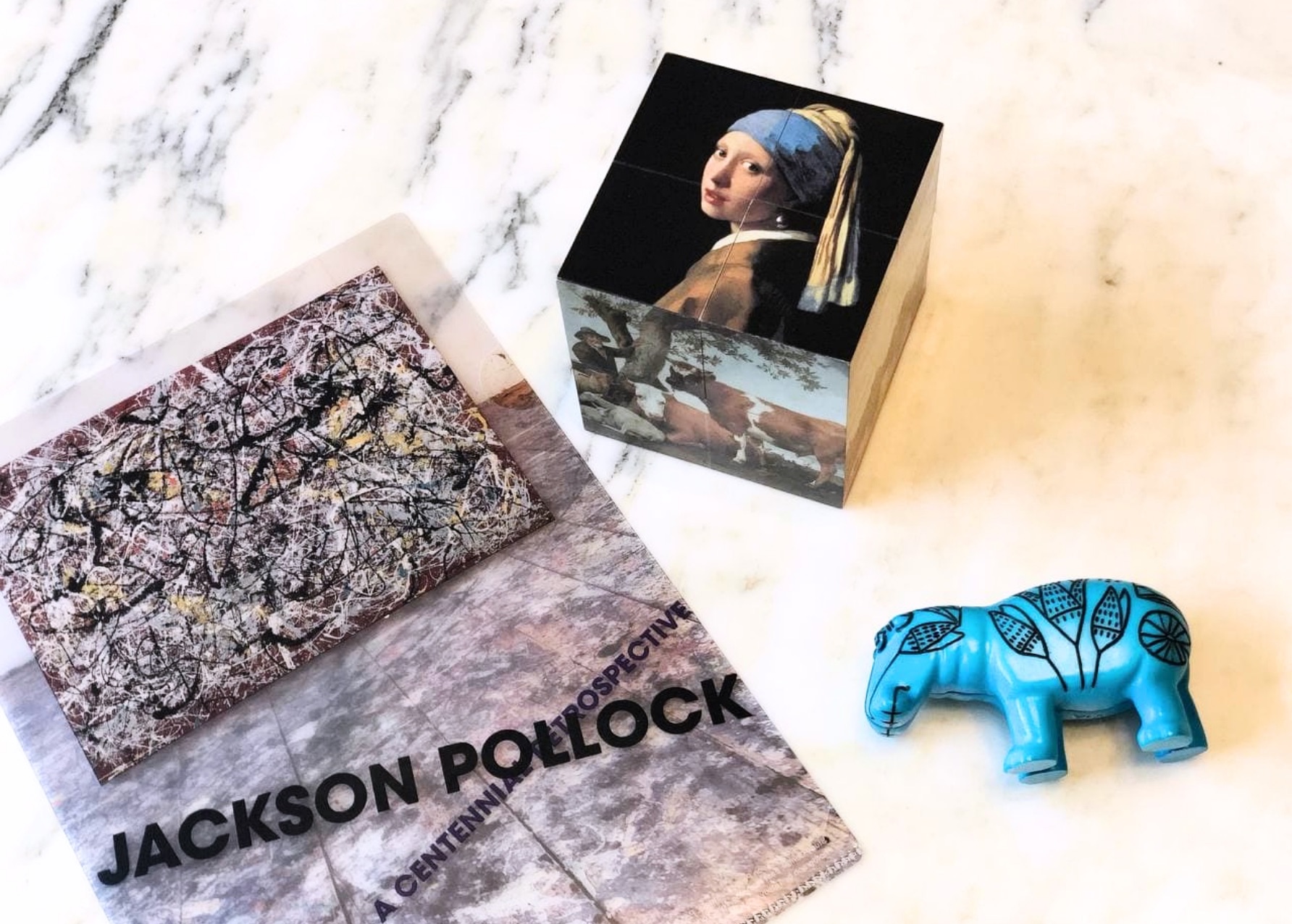
Commercialization of museums is accelerating
Less public funding for museums means more commercialization. Museum gift shops around the world offer varieties of fancy products such as magnets, mugs, puzzles, plastic folders, umbrellas, water bottles, and phone cases. Nowadays, we can purchase goods from online shops without even visiting the museums. While some products are inspiring and handy, is accelerating commercialization the only way to financially sustain museums?
2021.8.1
Researcher

Yuki TERADA
Architecture and the Sustainability of Re-Use

Sustainable (Old) Architecture
In response to the dire climate consequences of new construction, some architects have begun to re-evaluate the need to always build new structures. One solution is “adaptive re-use.” Adaptive re-use approaches existing buildings that would otherwise be demolished and retrofits them with new sustainable technologies and a new program for contemporary use. This is a major shift in architectural thinking. Architects are taught that the world’s greatest buildings are new projects that manifest the unique vision of the architect. In other words, the problem-solving and strategizing involved in adaptive re-use has not traditionally been valued as an “architectural” act. This is changing however.
As an early example of adaptive re-use, we can look to Lina Bo Bardi’s SESC Pompeia Factory in Sao Paulo, Brazil (1977-1986). Originally a metal barrel factory, Bo Bardi gutted the building and utilized its open floor plan to create a wandering program suitable for art exhibitions and cultural events. The structure has not been re-clad and retains all of its former structural elements typical of a factory floor. Bo Bardi added small touches like red paint, ramps, and water features that indicate its adaptive re-use.
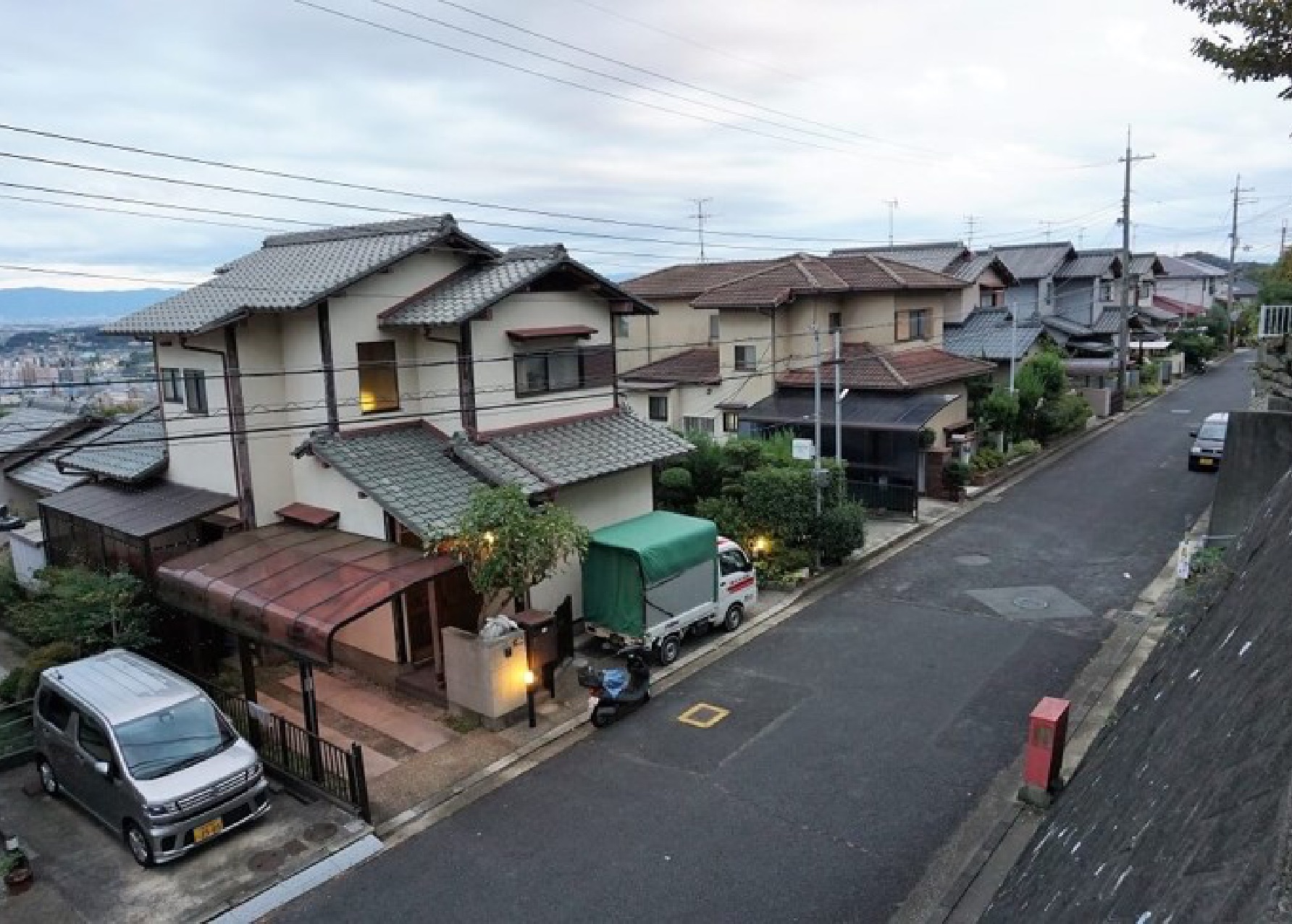
Unsustainable (New) Architecture
Architecture is hungry. Buildings consume massive amounts of energy to operate, and the carbon footprint of new construction is enormous. Between the years 2013 and 2016, new construction projects around the world accounted for 36 percent of all energy use and 39 percent of all CO2 emissions.
The obsession with new construction is particularly acute in Japan, a country where the average house is only used for 30 years before being demolished. Due to the high cost of land, even prominent architectural landmarks have been destroyed to make room for new construction. And thus the cycle repeats itself.
Common Japanese suburban homes like these consist of prefabricated units manufactured in a large factory and shipped to the site. The manufacturer, real estate agent, construction team, and buyer are all aware of the short lifespan of the building. House manufacturing companies rely on this short cycle to predictably maximize their profits at the expense of the environment.
2021.8.1
Researcher

Matthew MULLANE
TOP


